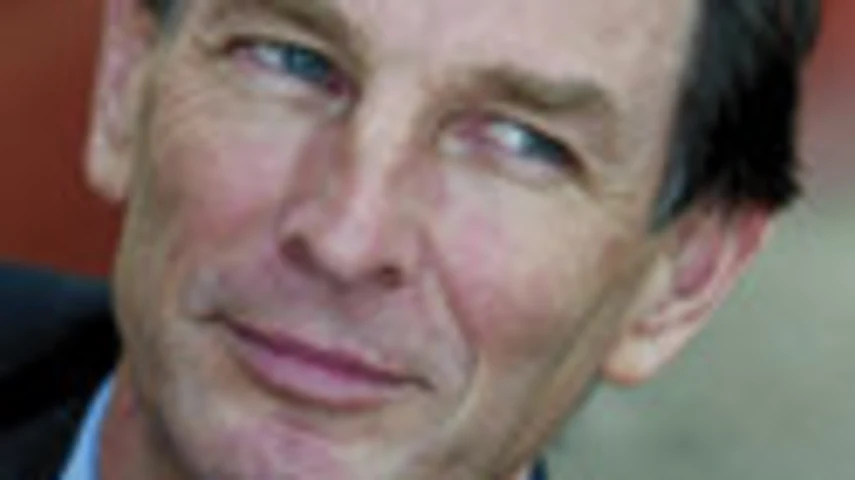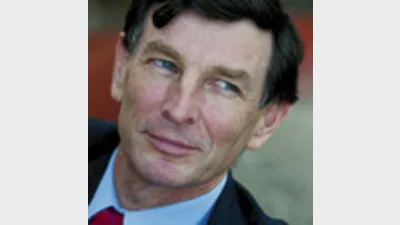The global financial crisis has only just begun



The GFC never ended, and the bill for a quarter century of profligacy may be due, Robert Keavney argues.
What happened to the collateralised debt obligations and other toxic assets, which were the focus of so much attention during the global financial crisis (GFC)?
Were they repaid? Broadly no. Have they increased in quality? No – the United States housing has continued to fall. So where have all these toxic assets gone?
Some losses have been borne by investors, for example, Basis Capital. Some have been written off by the institutions that owned them. But a significant volume has been taken by the Federal Reserve and a large sum remains with banks – in both cases being carried on the books at values which are illusory.
Part of the measures introduced to ameliorate the GFC was to allow the banks to pretend their toxic assets were worth more than they are. The Fed is doing likewise. This is a strategy of solving a problem by pretending its not there - like a frightened child who closes his eyes so he can’t see what frightens him.
The crisis was materially a result of over-indebtedness. Has this reduced?
During the Great Depression, total American debt as a percentage of gross domestic product (GDP) reached 300 per cent, unprecedented and not approached again for half a century. However, since 1980 debt has inexorably risen to a peak in the recent – I mean current – financial crisis, above 370 per cent. It has since inched down to around 350 per cent, but it is still stratospheric.
In no sense has the debt problem been addressed. Yet, as markets have risen over the last few years, the confidence of investors has followed. There has been a tendency to think that the crisis is over and that we have entered an enduring recovery phase.
The thesis of this article is that the GFC never ended and is still ongoing.
The John Wayne School of Economic Management
The generation now running America grew up watching cowboy movies in which, unfailingly, the US Cavalry - with John Wayne in the lead - rode over the hill to the rescue just when the peril was the greatest.
During the GFC it was governments and their central banks - led by Captain Ben Bernanke - that rode to the rescue. Hooray!
The authorities engaged in a flurry of extreme action, for example guaranteeing banks, initiating stimulatory programs (cash for clunkers, etc), quantitative easing (QE) and so on. Unfortunately, the effectiveness of the ‘rescue’ can be seen in the state of the economy today.
Most of the strategies implemented lacked any historical evidence suggesting they would be effective. Yet, similar policies were applied in Europe, China and Australia.
It is well known by anyone who reads a newspaper that America is weak, Europe is wounded, and Australia is slowing down, though hanging by a resources thread.
Meanwhile, China’s economy – seen by many as Australia’s saviour – is artificially inflated by excessive investment.
In aggregate, these represent a most serious situation, not improved - and perhaps made worse - by the various ‘rescues’ administered so far.
Since I began writing this, the stock markets fell sharply on August 7 and S&P downgraded US debt. Events are moving so fast that, by the time this is published, it may be clear to everyone that the situation is deeply serious.
However, the recovery of markets from the depths of the GFC implied a widespread, but quite illusory, view that the world’s economic problems were being overcome. It is therefore worthwhile highlighting how grave the situation is.
Comfort Uber Alles
Much of the developed world is over-indebted. Deleveraging is a pre-condition for a sustainably healthy economic environment. But deleveraging is painful.
The modern Western world is obsessed with comfort, and this has been reflected in the economic arena in an obsession with avoiding downturns - at any price.
As the Economist’s Buttonwood column (July 30, 2011) put it:
“Economic policy…over the last 25 years has followed one overriding principle: the avoidance of recessions at all costs. For much of this period, monetary policy was the weapon of choice. When markets wobbled, central banks slashed interest rates. A by-product of this policy was a series of debt financed asset bubbles. When the last of those bubbles burst in 2007 and 2008, the authorities had to add fiscal stimulus and QE to the mix.”
During this period of extraordinary stimulus real median household income has continued to decline to a level 5 per cent below a decade earlier. (One result of QE was to pump up equity markets, at least temporarily.
Federal Reserve chairman Ben Bernanke claimed credit for this as a benefit of Fed policy - as if it is a role of central banks to manipulate markets.)
The economy has remained anaemic. The deficit has remained horrific, indeed indebtedness increased to pay for the stimulus.
Over each of the last three years, the United States government borrowed 36-40 per cent of everything it spent. The end result of this, if continued too long, is unthinkable.
The dilemma America faces today can be described as follows: the deficit needs to be addressed for growth to be sustained, but growth is too weak to address the deficit. In other words, in the short term, ever more debt seems unavoidable.
Buttonwood concludes, “In a sense the bill has come due for the past 25 years.”
He speaks of Britain but it aptly describes America and parts of Europe.
How Did It Happen?
In my youth there was a great caution about debt – it could lose you your house.
This was a result of the influence of the last generation with living memory of the Great Depression. In those days, loans were principal and interest, and monthly reductions of principal, were monitored with satisfaction by mortgagees because to be debt-free was to be secure.
Debt was to be gotten rid of as fast as possible.Governments ran surpluses as often as deficits.
How Did These Attitudes Change?
Howard Marks of Oaktree Capital (memo from the chairman, July 21, 2011) traces it back to 1967, with the creation of the first credit cards that did not require the full balance repaid every month. This meant the debt need not be repaid, so long as the interest was paid.
Previously consumers could only buy what they could afford, defined as having the money to pay for it. Credit meant consumers could buy things they would be able to pay for later.
However, as the practice of permanent outstanding balances was adopted, credit has come to mean consumers can buy things they can afford to pay the interest on.
Marks comments: “One of the most striking aspects of debt in the modern era is that little if any attention is paid to repayment of principal. No one pays off their debt. They merely roll it over - and add to it. In other words, repayment of principal [is] absolutely unimaginable.”
Simultaneously, governments have adopted the same policy, spending more than they earn most years and incurring compounding debts. Since 1980, the US has run a deficit every year except four.
Once borrowers owe more than they can afford to repay, they lose control of their fate, which then relies on the willingness of borrowers to roll over their debt. This is true for individuals, businesses and nations. All three would be under threat if we return to credit crunch conditions.
So far, Greece is the only nation to have come face to face with the threat of a lenders’ strike. But, eventually, anyone who can’t repay their debts could suffer this. Many great nations, including the no-longer triple A rated US, cannot pay off their debts (ie. repay the principal).
At this moment there is no question of lenders abandoning America, and long may it remain so. We are just exploring extreme possibilities should US debt compound inexorably, and lenders take fright.
American Political Zealotry
The US default deadline crisis underlined the lack of balance of the political class, whose role it should be to chart a path to a stronger future. Australia’s politicians may (with a couple of exceptions) be bland and stand for no more than getting elected, but at least they wouldn’t knowingly bring the country to its knees in pursuit of ideological purity.
If you had to select someone to lead America out of its difficulties, you would not pick many of the people who currently populate the legislature.
The European Problem
All that really needs to be said about Europe is that it faces the same problems as America, compounded by the absurdity of a common currency for Germany and Greece, and everything between. In aggregate, Europe seems riskier than America.
Like the Federal Reserve, the European Central Bank has acquired toxic loans, valued unrealistically, and is continuing to do so. (If anyone invents a way to short these institutions, I would love to get set.)
Europe is terrified about Greece being the first domino, due to the extent of loans by their banks to Greece and its banks. Then add Portugal, Ireland, Spain and Italy as danger points and there is a possibility of a full-blown banking crisis. Already there are reports of interbank lending in Spain becoming frozen.
But the banking system is integrated worldwide. The GFC has demonstrated that when banks don’t function, nothing functions.
Earlier in the GFC, governments stepped in to guarantee their banks but a government guarantee is only as good as the government that gives it. We have a new game now, unknown in the modern world and governments are becoming the weak link.
Turning Japanese
So far America, Britain and much of Europe has followed the Japanese precedent - lengthen the wick, and hope that something turns up. This precedent is not inspiring.
The Japanese introduced ineffective stimulus package after ineffective stimulus package at their economy. Will the West do likewise? I fear so.
The world faces the possibility of an international banking and sovereign crisis.
I acknowledge that history teaches that extrapolating existing conditions into the future is fraught. It is also possible that we may somehow find a way to muddle through. We may also enter another false dawn, such as we experienced in the two years since March 2009.
Nonetheless, the current situation is grave.
Robert Keavney is an industry commentator.
Recommended for you
In this episode of Relative Return Insider, host Keith Ford and AMP chief economist Shane Oliver unpack the RBA’s decision to keep the cash rate on hold in the face of rising inflation and whether the governor’s hawkish tone is a sign of things to come.
In this episode of Relative Return Insider, host Keith Ford and AMP chief economist Shane Oliver discuss the September quarter GDP figures, which show Australia’s economy regaining momentum.
In this new episode of The Manager Mix, host Laura Dew speaks to Haley Devine, head of wealth management at MaxCap Group, to delve into private credit and commercial real estate.
In this new episode of The Manager Mix, host Laura Dew speaks to Benjamin Leung, head of systematic investments at Macquarie Asset Management, to understand the use of systematic investments.







